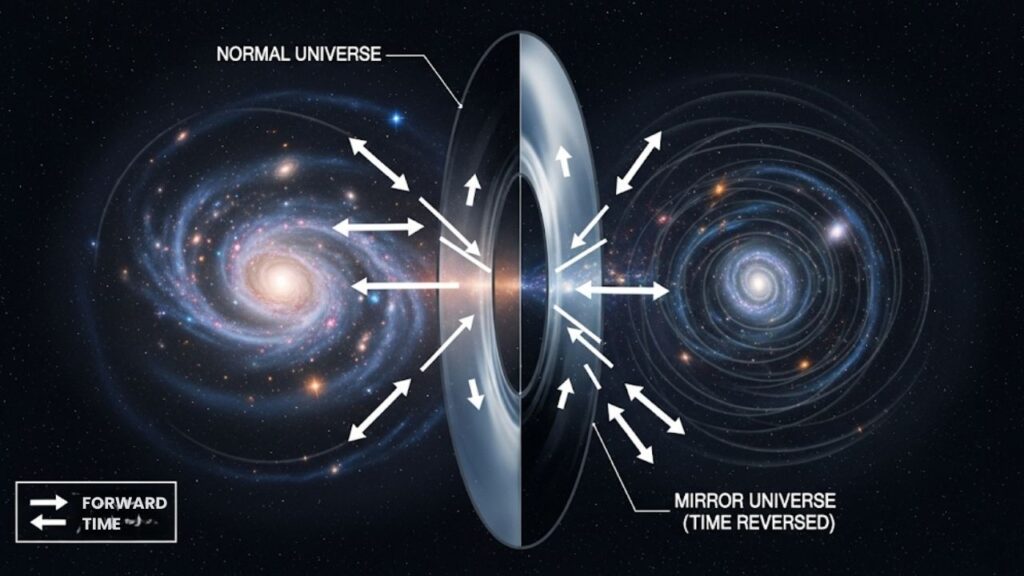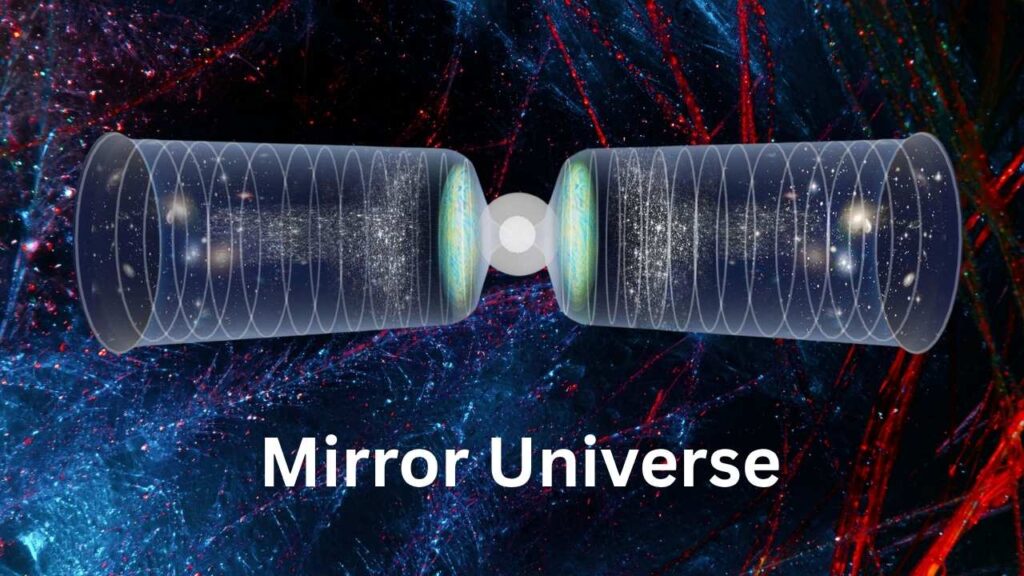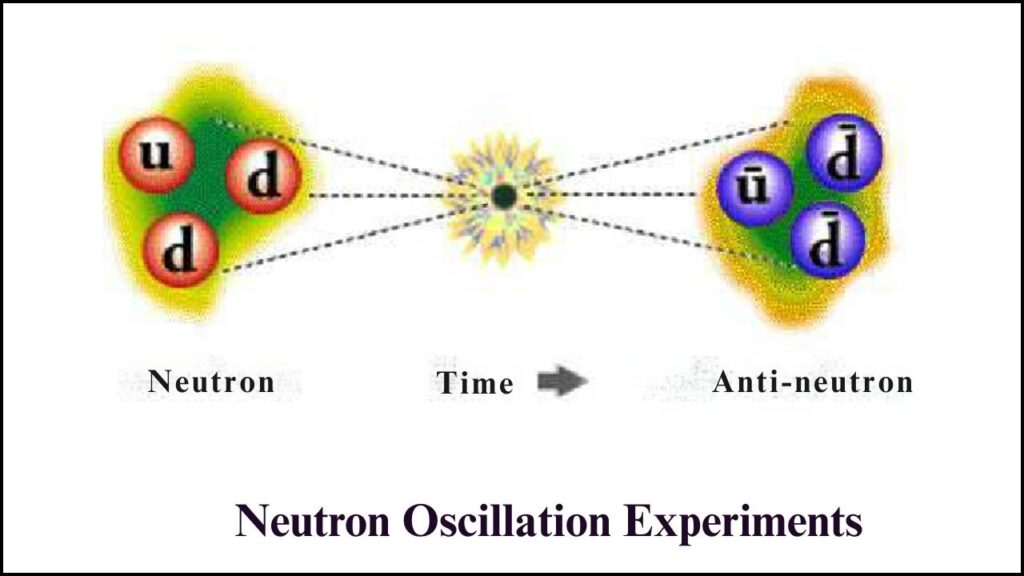Scientists are exploring an extraordinary idea that a mirror universe — an unseen parallel world — could be influencing the way gravity works in our universe. This surprising concept has the potential to unlock the mystery of dark matter, the invisible substance that makes up about 27% of the total universe but cannot be directly detected except through its gravitational effects.

In this detailed guide, we’ll explain what a mirror universe is, how it could alter gravity, the latest scientific clues supporting this theory, and what it means for our understanding of the cosmos. Whether you’re a curious beginner or a science professional, this article breaks down complex physics in a clear, approachable way.
Table of Contents
What Is a Mirror Universe?
Think of a mirror universe as a reflection of our own reality, but with some stunning differences: time might flow backward, and all particles are replaced by “mirror” versions with opposite properties. This is not just a sci-fi idea; physicists have been investigating this concept as a possible explanation for the dark matter puzzle.
In a mirror universe, everything is fundamentally similar yet reversed — particles, interactions, and physical laws exist but in a mirrored form. Crucially, this mirror world does not interact with ours through light or electromagnetism, making it invisible to our instruments. Instead, its presence is sensed primarily via gravity — the weak but universal force shaping the cosmos.

This idea originated to address a bigger question: Why is there more gravitational pull in the universe than can be explained by visible matter alone? The extra gravitational influence is attributed to dark matter, and the mirror universe hypothesis suggests that this dark matter might actually be ordinary matter in the mirror world.
A Mirror Universe Might Be Warping Our Gravity
| Topic | Insight |
|---|---|
| Dark Matter Proportion | Constitutes about 27% of the universe; undetectable except through gravity |
| Mirror Universe Concept | A parallel universe with mirror particles, interacting with ours mostly through gravity |
| Gravitational Impact | Mirror matter’s gravity can create effects that explain galaxy rotation curves and cosmic structure |
| Experimental Evidence | Research is ongoing into phenomena like neutron oscillations that might reveal mirror interactions |
| Cosmological Implications | The mirror universe model offers insights into matter-antimatter imbalance and cosmic uniformity |
The mirror universe hypothesis offers an elegant, compelling explanation for the enduring dark matter mystery. By positing a parallel world of mirror particles that invisibly influences us through gravity, this theory ties together deep questions about the universe’s composition, its shape, and why matter dominates over antimatter.
While still awaiting conclusive experimental confirmation, this theory is pushing the boundaries of cosmology and particle physics. It invites both researchers and enthusiasts to imagine a cosmos far richer—and stranger—than our everyday experiences suggest.
For experts and curious minds alike, understanding and tracking developments in mirror universe research promises to open exciting new frontiers in science and technology.
Official source reference: Dark Matter and Mirror World – PMC
Why Is the Mirror Universe Theory So Exciting?
Scientists are excited because the mirror universe theory provides a natural candidate for what dark matter might be. Instead of inventing exotic new particles, it suggests dark matter consists of mirror particles, counterparts to regular particles with similar mass but invisible to standard detection methods.
This theory offers promising solutions to several cosmic mysteries:
- Matter-Antimatter Imbalance: In our universe, matter vastly outnumbers antimatter. The mirror universe could be where antimatter predominates, balancing the overall cosmic ledger.
- Cosmic Flatness and Uniformity: The uniform temperature and flat shape of the universe, which conventional Big Bang theory struggles to explain, emerge naturally when considering mirror universe interactions as an alternative to cosmic inflation.
How Could a Mirror Universe Warp Gravity?
Imagine two universes intertwined, sharing the same space but mostly invisible to each other except through gravity. The mirror matter in this parallel universe contributes its gravity, adding to the total gravitational pull we detect. This combined gravity can “warp” spacetime more strongly than visible matter alone can explain.
This explains why stars in galaxies move faster than the gravity from visible stars would allow — the extra pull comes from mirror matter’s gravity.
The Science Behind Mirror Universe Theory: Step-by-Step
1. Mirror Symmetry and Particle Doubling
The mirror universe theory applies a symmetry (called Z2 symmetry) that pairs every known particle with a mirror particle. Early in the universe’s history, these mirrored particles and forces were balanced and identical.
2. Temperature Difference Between Universes
Soon after the Big Bang, events caused the mirror universe to be cooler than ours, allowing it to evolve differently but preserving fundamental processes like the formation of atoms.
3. Mirror Particles as Dark Matter
The lightest mirror matter particles, such as mirror protons or mirror neutrons, are believed to be stable and abundant. They don’t emit or absorb light, making them invisible, but their gravity influences our universe and explains dark matter effects.
4. Neutron Oscillation Experiments

One fascinating experimental approach tests if particles like neutrons can “oscillate” — temporarily transform — into their mirror counterparts. Such transitions would provide direct proof of mirror matter. Laboratories around the world are conducting such experiments.
Practical Impacts for Science and Technology
- Particle Physics Revolution: Detecting mirror particles would extend the Standard Model of particle physics and reveal new fundamental symmetries.
- Better Cosmological Models: Accounting for mirror matter helps scientists build more accurate models of the universe’s evolution and large-scale structure.
- New Experimental Techniques: Future instruments and experiments can be designed to detect subtle gravitational anomalies or particle oscillations from the mirror world.
Astronomers Observe Largest Black Hole Merger Ever Recorded in the Universe
Scientists Detect Giant Void in the Universe—Could This Solve the Big Bang Mystery?
Experts Say the Universe May Follow Hidden Energy Patterns Beyond Known Physics
FAQs About A Mirror Universe Might Be Warping Our Gravity
Q: Is a mirror universe the same as a multiverse?
No. The mirror universe is a specific type of parallel universe — a reflected copy — whereas the term multiverse broadly refers to many possible universes with potentially very different physics.
Q: How can scientists detect something that doesn’t interact with light?
By observing its gravitational effects on visible matter, plus looking for phenomena like neutron to mirror neutron oscillations in labs.
Q: Is the mirror universe theory widely accepted?
It’s a respected speculative theory with growing experimental interest, but it needs more evidence for full acceptance.
Q: Could the mirror universe affect us directly?
Apart from gravity, interactions are extremely weak or nonexistent, so any direct effects would be subtle and currently undetectable.



















